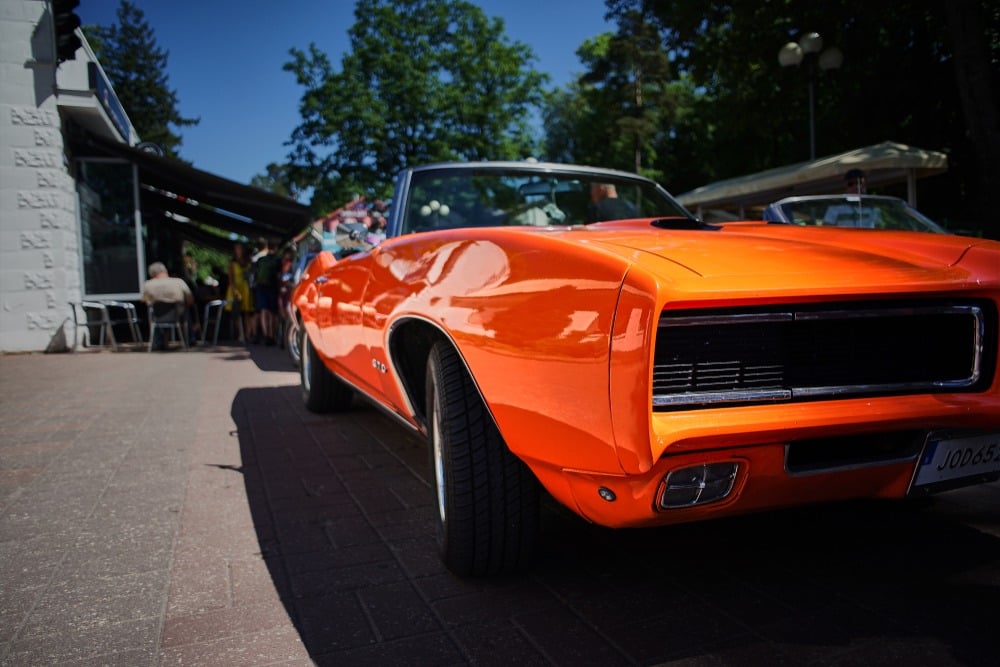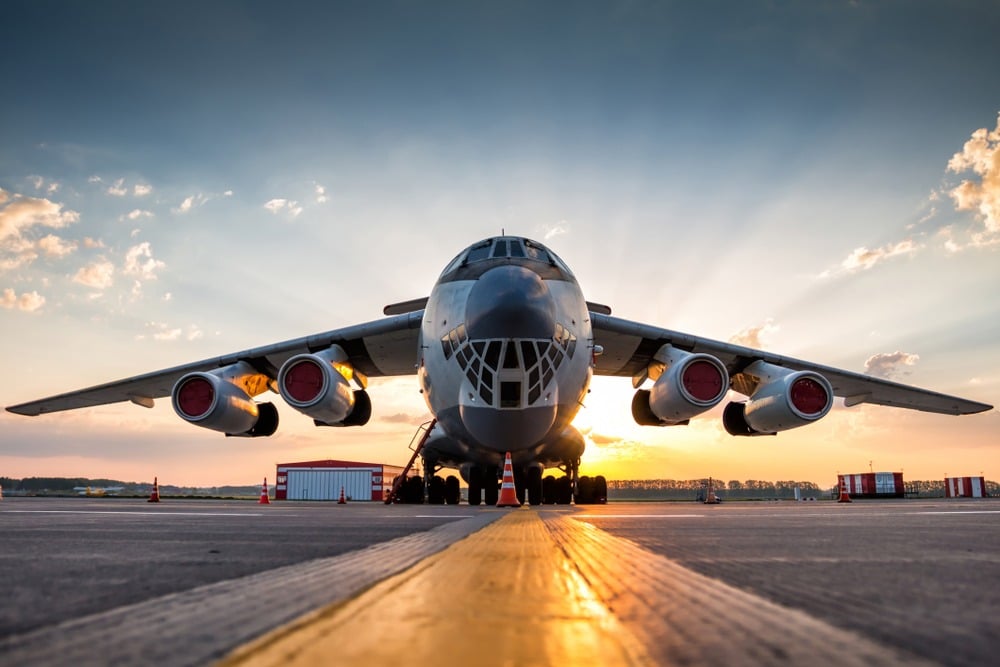How to Make Sure Your Vehicle Complies With POV Inspection Army Regulations
Military Shipping, Tips, Vehicle ShippingWith 0 commentsWhether you’re shipping a privately owned vehicle (POV) or simply driving it on and off your duty base, you have to think about vehicle inspection. Army and other military officers need to ensure that any vehicle you drive is safe for use. Plus, you have specific POV inspection army regulation and criteria to meet when transporting a vehicle outside the United States or back into the country.
Failing these inspections creates problems.
You may not be able to use your POV again until you bring it up to code. If you’re shipping the vehicle, it may get held or impounded. As such, you should do everything in your power to ensure your vehicle passes these inspections.
Generally speaking, you’ll have three types of inspections to deal with:
- On-base inspections
- Inspections for shipping a vehicle out of the United States
- Inspections related to shipping a vehicle back into the United States
This article explains how to make sure your vehicle passes all three types of inspection.
On-Base Inspections
On-base inspections vary depending on the base and the branch of the military you serve. A Marine Corps vehicle inspection may differ greatly from an inspection that Navy or Army personnel experience.
Regardless of any differences in the specific processes, these inspections are carried out for the same reasons. On-base inspections confirm that your vehicle is safe to operate, both on the base and off. An unsafe vehicle presents risks to other people, which the military wishes to minimize as much as possible. Furthermore, inspections allow Military Police to check that you’re not trying to use your vehicle to sneak anything into the base that shouldn’t be there.
How Do On-Base Inspections Work?
It all depends on the base.
Some bases have blanket inspection policies that include checking every vehicle before leaving or entering the base. Others operate military random vehicle inspections. In these cases, the base may use a computer program to determine the time, date, and location for a random inspection. This approach may also mean your POV gets inspected even if you’re not driving it away from your base. Essentially, you must ensure your POV is always prepared for a vehicle inspection. Army regulations aren’t flexible, so a failed inspection may strip you of your ability to use the vehicle until you fix any problems cited.
The Requirements for an On-Base Vehicle Inspection
Again, the specific requirements vary depending on the base. However, most will run initial checks to ensure the vehicle is allowed to enter the base. These checks may require you to present the following information:
- A current driver’s license
- Safety inspection documents
- Proof of insurance
- A current state registration
Note that these requirements tend to apply to both POV and military vehicles. Think of these inspections as a way for the base to confirm that you’re legally entitled to drive the vehicle you’re bringing in. Expired licenses and documentation may lead to the base holding your vehicle until your documents are current.
Assuming you can provide the proof of ownership and insurance the base requires, your inspector will likely run through a vehicle safety inspection checklist. Army inspections are designed to confirm the safety of the POV. While checklists vary between bases, they normally cover the following issues.
Tires
Your tires are checked for wear, weathering, bulges, breaks, and cuts. The inspector also examines the tread. You can run this test yourself by placing a penny inside the tread with Lincoln’s head facing you. If you can see all of the head, the tire tread isn’t deep enough. Inspectors check spare tires to make sure they’re inflated and that you have the equipment needed to install them.
Lights
Every light on the vehicle is inspected:
- Headlights
- Tail lights
- Turn signals
- Brake lights
- Flashers
- Backup lights
- License plate lights
Checks ensure that the bulbs work, the lenses are intact, and that the lights operate properly. For example, a brake light with a working bulb is still deemed non-operational if it doesn’t activate when you press the brake pedal.
Mirrors
This is one of the simplest items on a vehicle safety inspection checklist. Army officials will look for any cracks or splits in the mirror. Even a small dent compromises the mirror’s integrity. Missing mirrors are an automatic failure.
Windshield and Windows
Similar to mirrors, the inspector checks for cracks, chips, and other types of damage in your vehicle’s windshield and windows. Even a small chip will eventually become a crack over time. Any issues that impair your vision will result in a failure. Your vehicle will also fail its inspection if your door mirrors don’t go up and down when they’re supposed to or if your wipers don’t work.
Brakes
Standard brakes and emergency brakes are both on the vehicle safety inspection checklist. Army and personal vehicles must have working brakes that are properly adjusted. The mechanisms required to work the brakes have to work correctly. For example, a brake pedal can only travel halfway toward the floor when pressed. If it goes further, this suggests the pedal has malfunctioned and needs replacing.
Bumpers
Lose, broken, and missing bumpers are all grounds for an inspection failure. Your vehicle will likely fail its inspection if a front or rear bumper is bent in a way that could create a hazard for other road users.
Seatbelts
A missing seatbelt is automatic grounds for an inspection failure. The inspector may also fail your vehicle if your seatbelts are frayed or if they don’t snap back into position when released. Loose seatbelts can’t lock in place to protect you if you’re involved in an accident.
Vehicle Interior
The main elements of your vehicle’s interior have to work to comply with a vehicle safety inspection checklist. Army inspectors will ensure that the following work:
- Front and rear defrosters
- Heater
- Horn
They might check for emergency equipment, such as a first aid kit, during the inspection. Some bases mandate that you have emergency equipment while others make the decision optional.
Under the Hood
Your inspector will pop the hood to wrap up their vehicle safety inspection checklist. Army regulations usually require the following checks:
- The windshield washer fluid is filled to the appropriate level. Inspectors may be stricter on this check during winter when you’re more likely to use the fluid regularly.
- Brake fluid needs to be filled to the correct level.
- The battery has to be held in place securely and have a solid charge. Inspectors usually look at the battery’s color indicator to see if it needs changing.
- Cracks, cuts, and bulges in hoses are all grounds for failure.
- Your power steering system must work properly and be filled to the appropriate level.
Upon completion of this vehicle safety inspection checklist, Army or military officials usually sign off on the inspection in your presence. You’ll likely need to sign the inspection document too. The inspector may specify a date for any follow-up checks, especially if the vehicle failed and you have to repair it.
Shipping a Vehicle Out of the United States
If you’re deployed outside the contiguous United States (OCONUS), you might have the opportunity to ship your POV to your duty station. This is the case for most countries, assuming you’re not entering an active warzone and the country doesn’t have import criteria that make shipping an American vehicle cost-prohibitive.
Better yet, the military pays to ship one POV to an OCONUS duty station as long as it passes a vehicle inspection. Army regulations state that a vehicle shipped to an OCONUS base must weigh no more than 20 metric tons. You can ship heavier vehicles, though you must pay out of pocket for the extra expense incurred.
You also need to provide proof of identification and vehicle ownership before your POV is shipped. If your POV is subject to a lien, you must offer a lien holder authorization letter that grants permission for you to ship the vehicle to another country.
Assuming your POV passes these basic checks, you then have to ensure your vehicle passes the inspection that allows it to enter another country. These quick tips help you to get through that process with minimal fuss:
- Clean your vehicle thoroughly before handing it over to a shipping company. Many OCONUS countries have strict import policies related to soil and dirt. If your vehicle has traces of American soil on it, you may find that it’s held up at customs until it’s cleaned properly.
- Remove any personal or loose items from the vehicle. The vehicle mustn’t contain liquids, flammable materials, hazardous substances, or pressurized cans.
- Fill your fuel tank up to a quarter so your shipping company can move the vehicle onto ships and loading bays.
- Provide copies of every key your vehicle needs.
- Make sure the vehicle has a working parking brake, no cracks, and no leaks. Damaged vehicles can cause issues during shipping.
Though it’s recommended that you remove personal items before shipping, you can keep some specific items and still pass a vehicle inspection. Army officials allow you to store items related to transportation or vehicle operation inside your POV. Examples include hand tools, tire irons, jumper cables, and children’s car seats.
Beyond these standard checks, your destination country may have specific restrictions in place. Speak to your local transportation office to confirm whether you need to consider any other issues when shipping a vehicle to an OCONUS station.
Shipping a Vehicle Back Into the United States
If you’ve shipped a POV to an OCONUS duty station, the vehicle can’t re-enter the United States until it passes a stringent vehicle inspection. Army officials aren’t usually involved in this inspection. Customs agents carry it out to ensure the vehicle complies with the regulations put in place by three agencies:
- The Department of Transportation (DOT)
- The Environmental Protection Agency (EPA)
- The United States Department of Agriculture (USDA)
Both the DOT and EPA inspections relate to the legality of driving the vehicle in the United States. DOT inspections ensure the vehicle is safe to drive while EPA checks confirm that it meets emissions standards. Thankfully, most vehicles that you buy in the United States meet these standards. The only exceptions may be classic or imported vehicles that require special permission for entry into the country.
Your vehicle should have a DOT stick on the driver’s side door jamb or door edge. It should also have a “CATALYST” or “Vehicle Emissions Control” sticker somewhere under the hood or in the motor compartment. Inspectors look for these stickers to check that your vehicle can enter the country. If the stickers aren’t present, you need to provide a stateside title, registration, or CARFAX report. In the case of the EPA requirements, you must submit these documents to the EPA to get a letter of compliance.
The USDA requirements focus on cleanliness.
Specifically, the USDA has many similar requirements to OCONUS countries that restrict soil, dirt, and plant life from other territories. These natural materials can have an impact on American ecosystems. Hence, it’s so important that they don’t get through customs.
Clean your vehicle from top to bottom, removing all dirt or soil. This includes cleaning hard-to-reach areas, such as wheel wells and door jambs. It’s often a good idea to have a professional cleaning service handle this job, followed by a personal inspection before you ship the vehicle to the United States.
Pass the Inspections
Your POV may be subject to several types of vehicle inspection. Army and military bases often use inspections to confirm the safety of your POV. The vehicle must also pass several inspections before it can be shipped in or out of the United States.
The information in this article helps you to prepare your vehicle for any inspection it may face. But you don’t have to deal with this process alone. If you’re shipping a vehicle to an OCONUS territory, or simply shipping it within the United States, Military Car Shipping can help.
We offer a full service that includes packing, transporting, and unpacking your POV. We understand the inspections you have to deal with and can help you prepare your vehicle so it passes through customs and arrives at your duty station unharmed. If you’d like to find out more about how we can help you, call 910-889-1993 or visit our website to get a free quote.



